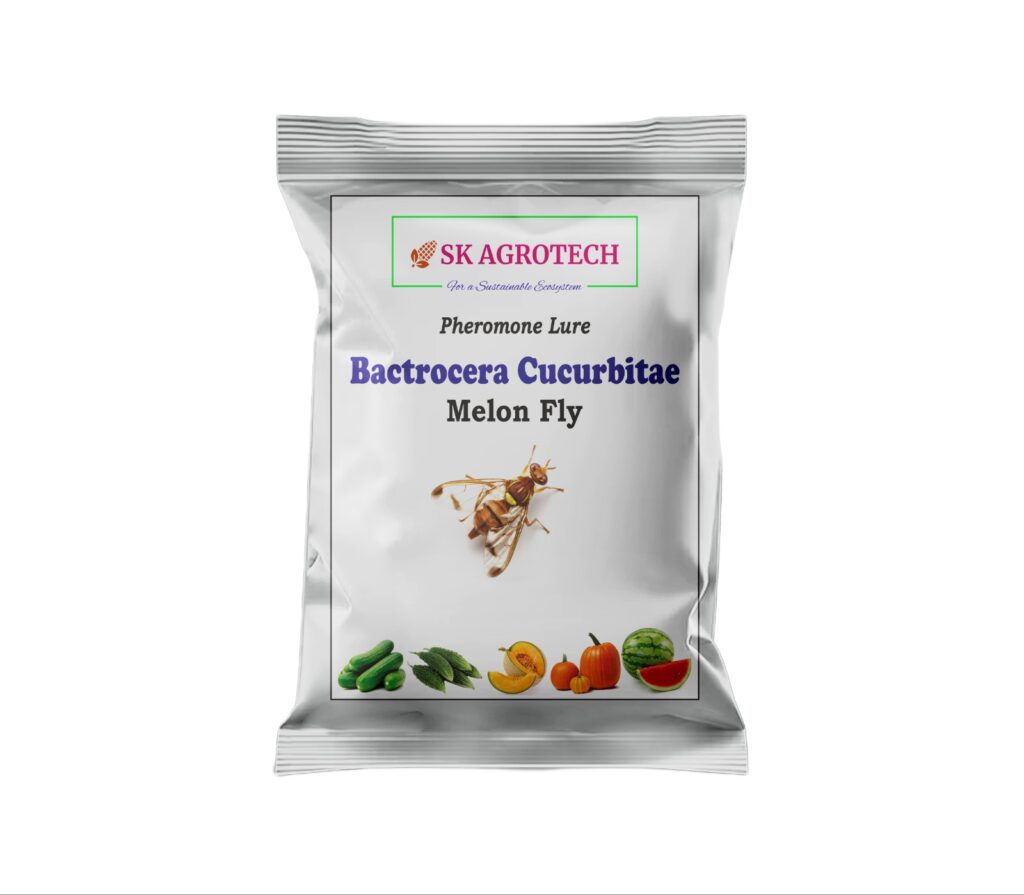Products

Bactrocera cucurbitae - Melon Fruit Fly pheromone Lure
Bactrocera cucurbitae (melon fruit fly), a major pest in cucurbit crops. Know its lifecycle, damage symptoms, and control using pheromone traps.
Overview:
Bactrocera cucurbitae, also known as the melon fruit fly, is a serious pest affecting cucurbitaceous crops such as bitter gourd, cucumber, pumpkin, and ridge gourd. Native to tropical Asia, it is now widespread in India and other warm regions. Infestation leads to severe yield losses and reduced fruit marketability.
Host Crops:
Bitter gourd (Momordica charantia)
Cucumber
Pumpkin
Bottle gourd
Ridge gourd
Snake gourd
Melon
Zucchini
Squash
Damage Symptoms:
Oviposition marks (small puncture holes) on fruit skin
Premature fruit dropping
Internal fruit rotting due to larval feeding
Secondary fungal/bacterial infections
Visible maggots inside harvested fruits
👉 Economic losses can reach up to 50–100% if not controlled during peak season.
Lifecycle of Bactrocera cucurbitae:
Egg: Laid inside fruit tissue by the female fly
Larva (Maggot): Feeds on pulp, causing fruit decay
Pupa: Develops in soil
Adult Fly: Emerges in 7–10 days; lives up to 1–2 months
🕒 One complete lifecycle can take 15–20 days under warm conditions.
Monitoring & Control Methods:
✅ Pheromone Traps (Highly Effective IPM Tool)
Use Cue-Lure based pheromone traps like:
Mac-Phail Trap
Bottle Trap
Fly Catcher Trap
✅ Cultural Practices:
Regular harvesting and destruction of infested fruits
Deep ploughing to expose and kill pupae
Use of fruit fly-resistant cultivars (where available)
Why Use Pheromone Traps from Pheromonetrap.in?
Compatible with Cue-Lure for Bactrocera cucurbitae
Long-lasting, weather-resistant trap designs
Ideal for organic and conventional farming
Supports early detection and population suppression
